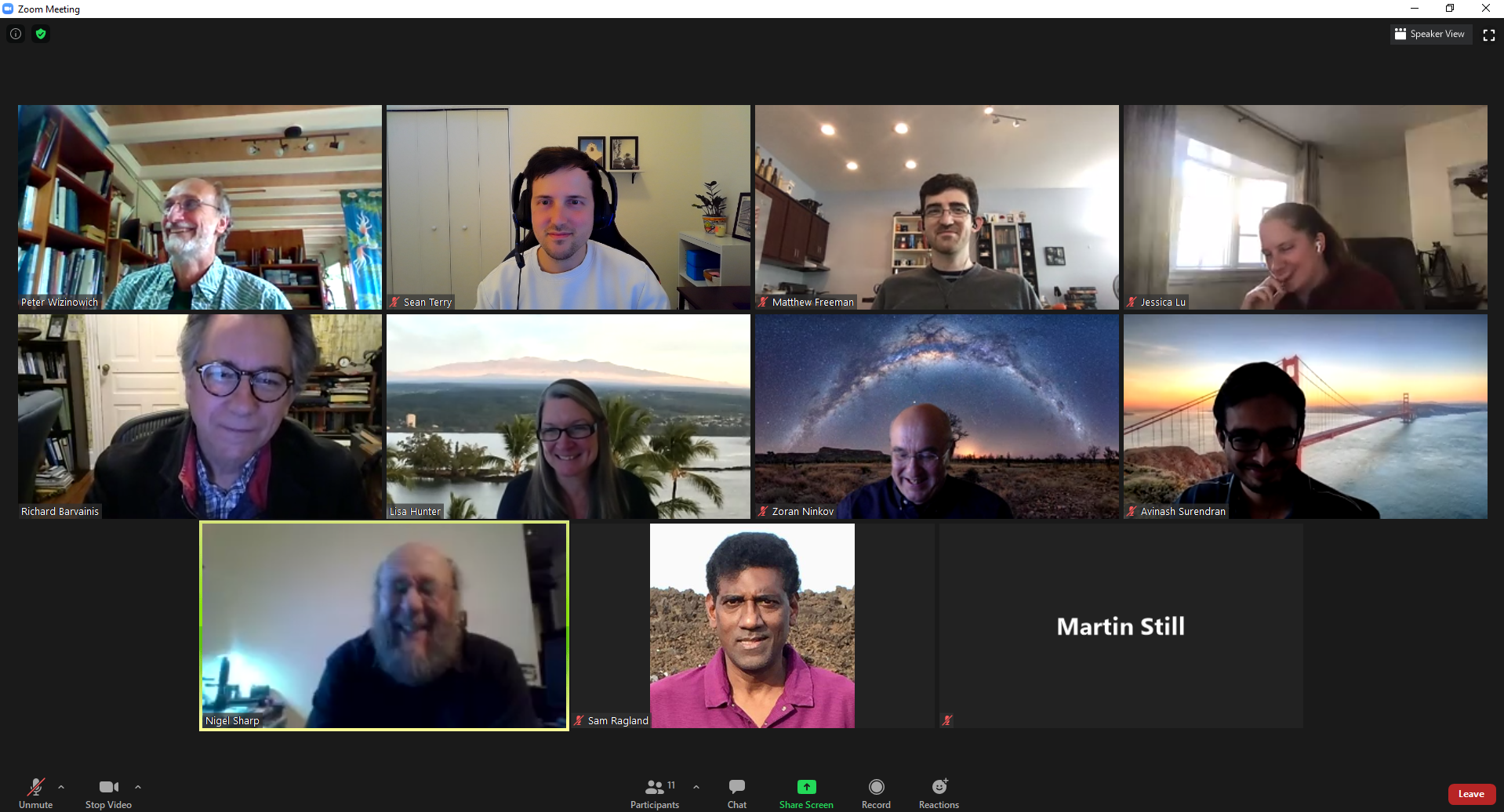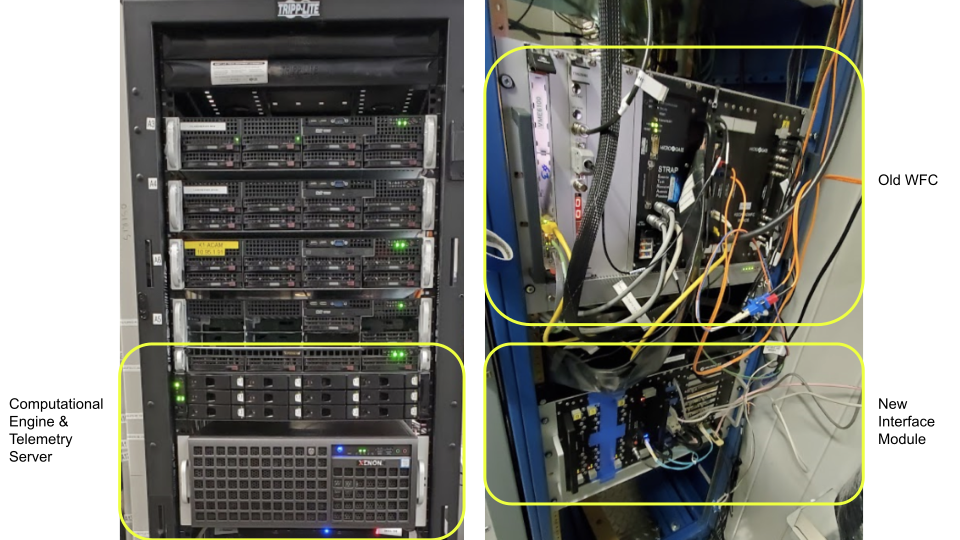Spring 2021 Update
Hello there! After an extremely grueling 2020 (in so many ways), I am happy to be providing a blog post update on KAPA.
The team has been hard at work installing and testing new hardware, developing new software, and successfully passing many preliminary design reviews (PDRs) and
detailed design reviews (DDRs). The team is also preparing for many more exciting upgrades to the Keck-I AO system later this year and beyond.
Design Reviews
Several design reviews were completed in 2020 and early 2021. Due to the Covid-19 pandemic, all of the design reviews were held virtually, along with the annual KAPA site visit in November 2020.
After each design review, the review committees formally recommended that the project proceed with no major issues. It is truly amazing that with all the struggles that the pandemic brought us in 2020, the only part of the project that slipped
was a few-month delay in receiving the real-time control (RTC) computer at Keck, which will calculate the wavefront distortions and corrections needed on milli-second timescales.
Here is a screenshot taken during the virtual site visit last November. Many more wonderful people who also attended are not pictured.
2020 KAPA Site Visit (held virtually)
We invite you to read the KAPA SPIE 2020 paper, Wizinowich et al. 2020.
You can find a ton of KAPA updates and status reports presented in this paper. There are also many details given on the plans and goals for KAPA in the coming years.
New Hardware
Recently several new pieces of hardware arrived and have been installed or are currently being installed at Keck-I.
The computational engine and telemetry server have been successfully mounted in the computer room. Also, the new
interface module has been successfully installed in the AO E-vault. Here are some images showing the newly installed hardware:
Several tests are still ongoing in preparation for the operations handover later this year. AO observers should start to see improved
performance once both the faster RTC computer and the faster wavefront sensor camera are both installed and operational.
2021 and Beyond
The outlook for the remainder of 2021 looks great for KAPA. In June the team will meet with the NSF review committee for a detailed design review of the laser tomography facility.
This coming fall and winter the team will conduct the asterism generator pre-install and the Keck-II RTC + OCAM operations handover. These advances
will enable the project to continue its steadfast progress toward the eventual 2023 KAPA first light! Thanks to all of the scientists and engineers
that work tirelessly to ensure the project continues to be a massive success!
Until next time,
Sean Terry (UC Berkeley)

